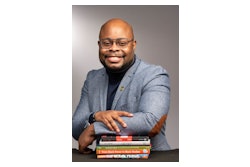I still remember the brief exchange with my administrative assistant Stephanie at the University of Michigan-Flint. She buzzed me on the intercom of my office line to tell me that Dr. Kenneth Gros Louis, chancellor of Indiana University (IU), wanted to speak with me. Knowing that I was in the process of reviewing a proposal to a major foundation, Stephanie asked, “Shall I tell him you’re busy and will call him back, or would you like to take the call?” I replied without hesitating that I would take the call.
Ken, after all, was no ordinary caller. He had been a phenomenal ally and valued mentor during my tenure as chancellor of Indiana University East. At that time, IU East was the smallest of the IU campuses, struggling with the transition from a two-year institution to a comprehensive four-year university, accredited by the Higher Learning Commission. One of only a handful of Native Americans serving as chancellor of a major research university, Ken’s commitment to diversity existed long before belonging, diversity, equity, and inclusion—and the acronym DEI—became ubiquitous terms in the lexicon of the academy.
Little did I know that my conversation with Chancellor Gros Louis would lead to my retirement as chancellor of the University of Michigan-Flint, and a return to IU as one of the first people in the country to be named a Vice President of Diversity at a multi-campus university system. I would have responsibility for an array of administrative units, including the Honors Division, which later became the Hutton Honors College, located on IU’s flagship Bloomington campus. When I informed several of my closest colleagues of my plans to leave a university CEO position to which many of them aspired, they inquired about my mental well-being: did I know what I was getting myself into by accepting a newly created, and not well defined, chief diversity officer’s position?
They reminded me of the gap between the rhetoric espoused by university leaders and trustees and the reality of their unwillingness to invest in long-term initiatives for systemic change. I expressed appreciation for their concern about me, acknowledged the risk of such a move, and shared with them the positive nature of my long-term relationship with IU dating back to 1970. Few of them were aware of IU’s historic leadership role in admitting Black graduate students from the South during America’s apartheid era. Even today, fewer people are aware of IU’s moniker as “the mother of Black College Presidents.” Thanks to the efforts of IU’s beloved and long-serving president, Dr. Herman B Wells, the university nurtured the dreams of countless Black aspiring university leaders with HBCU roots.
In the more than two decades since I accepted IU’s invitation to serve as vice president for diversity, many colleges and universities, and corporate entities throughout the country, have created such positions. In fact, in the aftermath of George Floyd’s murder at the hands of Minneapolis police officers, and the international Black Lives Matter protest that followed, even major foundations, non-profit organizations, and professional athletic teams have appointed chief diversity officers. While the duties of the CDO vary from one institution to the next, as well as by profession, I believe it is prudent for those considering accepting such a position to do their due diligence before signing a contract, no matter how attractive the salary may be. What follows is a list of questions that all CDO candidates might want to ask if they are committed to doing more than participating in a “window dressing” exercise.
1. Does the institution have a DEI strategic plan, complete with concrete goals, objectives, metrics, and timelines? If not, are DEI goals integrated in the institution’s strategic plan? Is the CEO committed to developing and implementing a DEI strategic plan?
2. Is the president held accountable by the board for achieving DEI objectives in the same way they are held accountable for maintaining fiscal solvency, reaching fundraising goals or maintaining enrollment stability, for example? Are members of the chief executive officer’s cabinet held accountable for achieving concrete objectives in their respective areas of responsibility? Are incentives and disincentives in place?
3. Are there funds budgeted specifically for DEI initiatives? If not, is the CEO prepared to invest the requisite human and fiscal resources to achieve espoused DEI objectives?
4. Is the composition of board of trustees or directors reflective of the level of diversity to which the institution or enterprise aspires? If not, is there an intentional strategy in place for achieving greater board diversity?
5. Does the institution have a “one size fits all” approach to DEI, or is there respect and acknowledgement of the need for differential strategies?
6. Does the president or CEO exude an understanding of the difference between equity, diversity, inclusion and belonging? Is there an expressed willingness to pursue each without conflating them?
Drawing inspiration from the visionary leadership of Herman B Wells, Ken Gros Louis used to tell me and others that we should “Go out there and do something good.” I’ve endeavored to heed his words during my leadership journey of nearly five decades in the academy. My two most important takeaways are that DEI is much more than an acronym—and talk is cheap! It’s time for chief executive officers and boards of colleges and universities and other entities to start taking DEI seriously, instead of merely pretending they do. Those leaders who are achieving demonstrable results deserve commendation, while those who are playing games deserve condemnation.
Dr. Charlie Nelms is the chancellor emeritus at North Carolina Central University. You can follow him on Twitter @CharlieNelms.



















